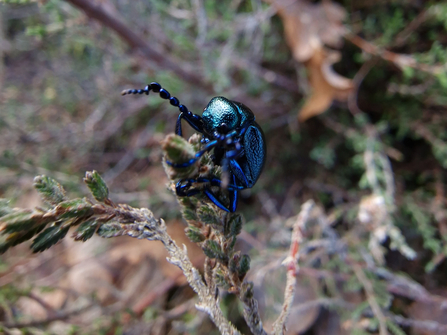As our climate shifts and temperatures increase, we’re seeing earlier sightings of various species so this beetle is no exception. This becomes a problem when that species food source isn’t yet available.Staffordshire Ecological Record
The ‘Bobs’ are back in town: Rare black oil beetle emerges in Staffordshire
On Tuesday 30 January the reserve team spotted the first beetle of the season. Last year the beetle emerged on 26 January, which was the earliest ever Staffordshire sighting.
Staffordshire Ecological Record Manager Rory Middleton said: “As our climate shifts and temperatures increase, we’re seeing earlier sightings of various species so this beetle is no exception. This becomes a problem when that species food source isn’t yet available.
“At Staffordshire Ecological Record, the county’s environmental records centre, we rely on members of the public to report their sightings to enable a better view of how unusual seasonal temperatures are affecting our wildlife across the county. This allows us to compare trends in Staffordshire alongside those around the UK and see how changes may alter species behaviour and survival.
“We encourage everyone to report their sightings, not only is it really helpful citizen science, but it’s also an easy fun activity to do while out on a walk.”

Black oil beetle at Highgate Common by TJ Ellis
Adult black oil beetles feed on soft grasses which are thankfully in plentiful supply at Highgate. Their main mission when they emerge is to find a mate, before the female goes off to burrow into the sandy soils to lay her eggs. If these hatch into larvae too early, they may not be successful in pupating. They rely on solitary bees which are not generally active until late spring. The beetle larvae climb onto flowers to hitch a ride on the bees as they feed. They are taken back to the bee’s nest where they take up residence to feed on the bee’s young, nectar and pollen stores.
More information on how to report sightings of wildlife can be found on the Staffordshire Wildlife Trust website at: www.staffs-wildlife.org.uk/wildlife/report-wildlife-sighting
